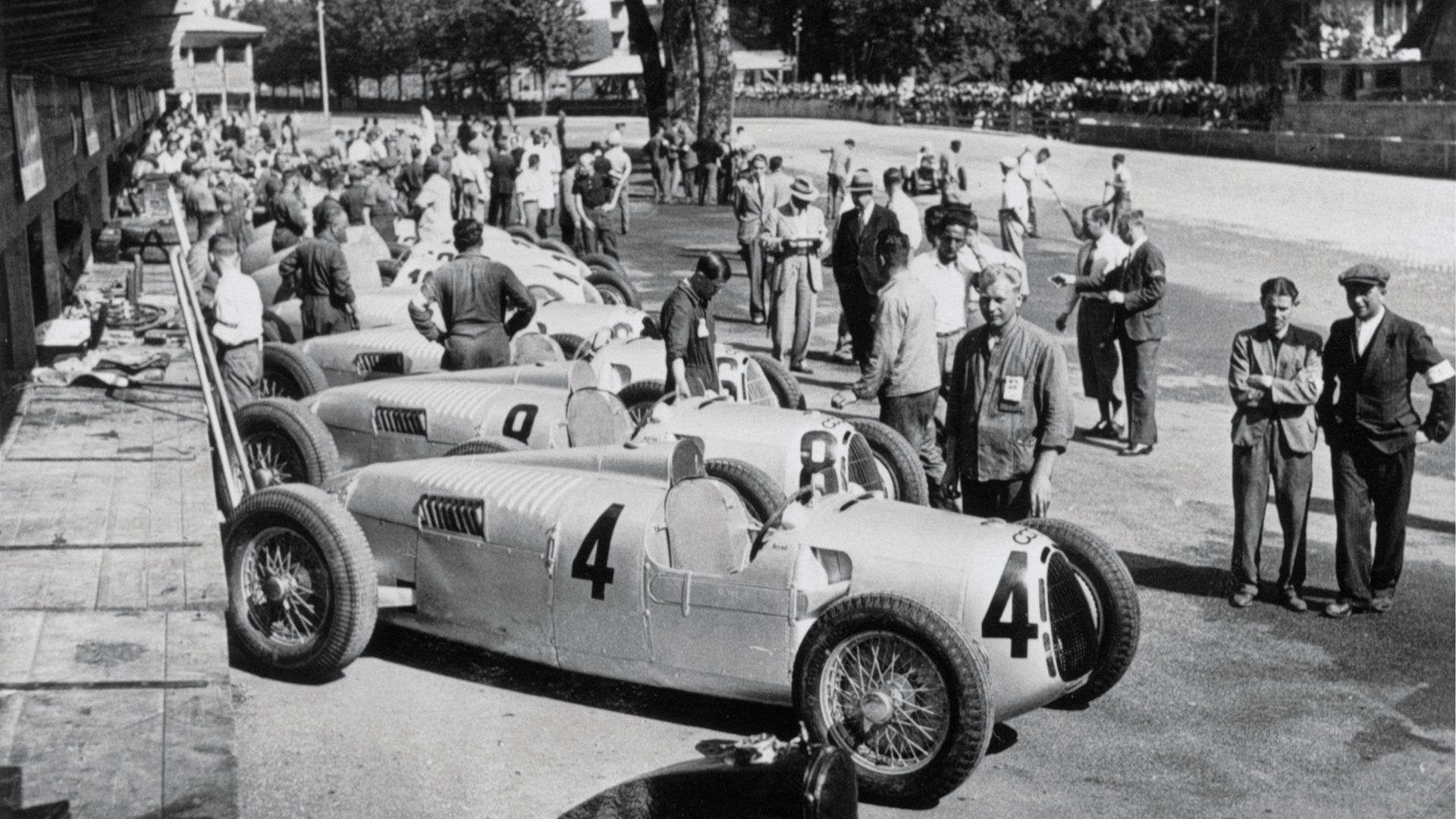Porsche Celebrates 90 Years of Engineering Services
It's been nine decades since Ferdinand Porsche first opened his engineering office in Stuttgart.














Engineering Excellence
Porsche has been building sports cars for over 70 years now, but it's been a pillar of engineering excellence for a full nine decades. The automaker recently took the time to celebrate Ferdinand Porsche's founding of his Stuttgart engineering office in 1931 under the lengthy name "Dr. Ing. h.c. F. Porsche Gesellschaft mit beschränkter Haftung, Konstruktion und Beratung für Motoren - und Fahrzeugbau," which happened at the height of a major economic crisis.
Photos: Porsche
Instant Success
The engineering office received its first official order from the automobile manufacturer Wanderer in the spring of 1931. Under the internal designation Type 7, Porsche designed a 1.5-liter, six-cylinder engine as well as the chassis. The first complete vehicle, which followed the same year, was the Porsche Type 8 with an eight-cylinder engine, although this did not actually enter series production. In the spring of 1933, Ferdinand Porsche was commissioned by Auto Union to develop a 16-cylinder racing car. The first test drives of the Auto Union car took place in November 1933, and during its first season in 1934, it set three world records and won several hillclimb races as well as three international Grand Prix events.
Photos: Porsche
>>Join the conversation about the success of Porsche engineering right here on Rennlist.com.
Branching Out
The office had also been working on building an inexpensive small car since 1933. Soon after, it received an order to design prototypes for Volkswagen. In 1936, the government of the German Reich decided to build the Volkswagen its very own factory, which Ferdinand Porsche was also commissioned to plan. At the same time, the engineering office was working on any number of other orders. For example, the Type 110 tractor with an air-cooled two-cylinder engine became the basis for the "Volkstraktor," as well as the tractor series produced after the second world war.
Photos: Porsche
>>Join the conversation about the success of Porsche engineering right here on Rennlist.com.
Birth of a Legend
In the spring of 1947, Ferry Porsche formulated his first ideas for building a sports car, which was given the design number 356. In February 1948, a road-ready chassis was produced, for which an aluminum roadster body was subsequently produced. The Porsche 356 "No. 1" Roadster mid-engine sports car received the official blessing of the authorities on June 8, 1948, when the Carinthian provincial government issued its general operating permit. This marked the birth of the Porsche sports car brand. Production of the rear-engine Porsche 356/2 began in the second half of 1948.
Photos: Porsche
>>Join the conversation about the success of Porsche engineering right here on Rennlist.com.
Rapid Growth
Porsche needed a place to test its vehicles while they were going through the development process and thus broke ground in 1961 on a special test track in the Weissach and Flacht districts, 25 kilometers west of Stuttgart. Following the launch of the 911, it became apparent that Porsche needed more space, and thus, at the end of the 1960s, plans for the Porsche Development Centre Weissach (EZW) had begun to take their final shape.
Photos: Porsche
>>Join the conversation about the success of Porsche engineering right here on Rennlist.com.
Continued Expansion
The following years saw continued expansion of the EZW. The Measuring Center for Environmental Technology (MZU) was equipped with six exhaust gas test benches in 1982. Construction of the test building for engines (PMA) began in 1983. In May 1986, Porsche opened what was then the world's most modern wind tunnel. The third construction phase was completed on September 29, 1986, with an extensive crash facility, which offered modern testing capabilities, as well as the flexibility to adapt to new testing techniques.
Photos: Porsche
>>Join the conversation about the success of Porsche engineering right here on Rennlist.com.
Still Going
Porsche Engineering took the first step on its international growth path in 2001 when it opened its location in Prague, which specializes in complex technical calculations and simulations. Since 2012, the company has also been operating one of the world's best-known automotive test sites: the Nardò Technical Center in Apulia, southern Italy. More than 20 test tracks and test facilities extend over an area amounting to 700 hectares, and Porsche Engineering also offers engineering services such as acoustic testing and the testing of driver assistance systems.
Photos: Porsche
>>Join the conversation about the success of Porsche engineering right here on Rennlist.com.
For help with your do-it-yourself maintenance and repair projects, please visit our how-to section in the forum.
